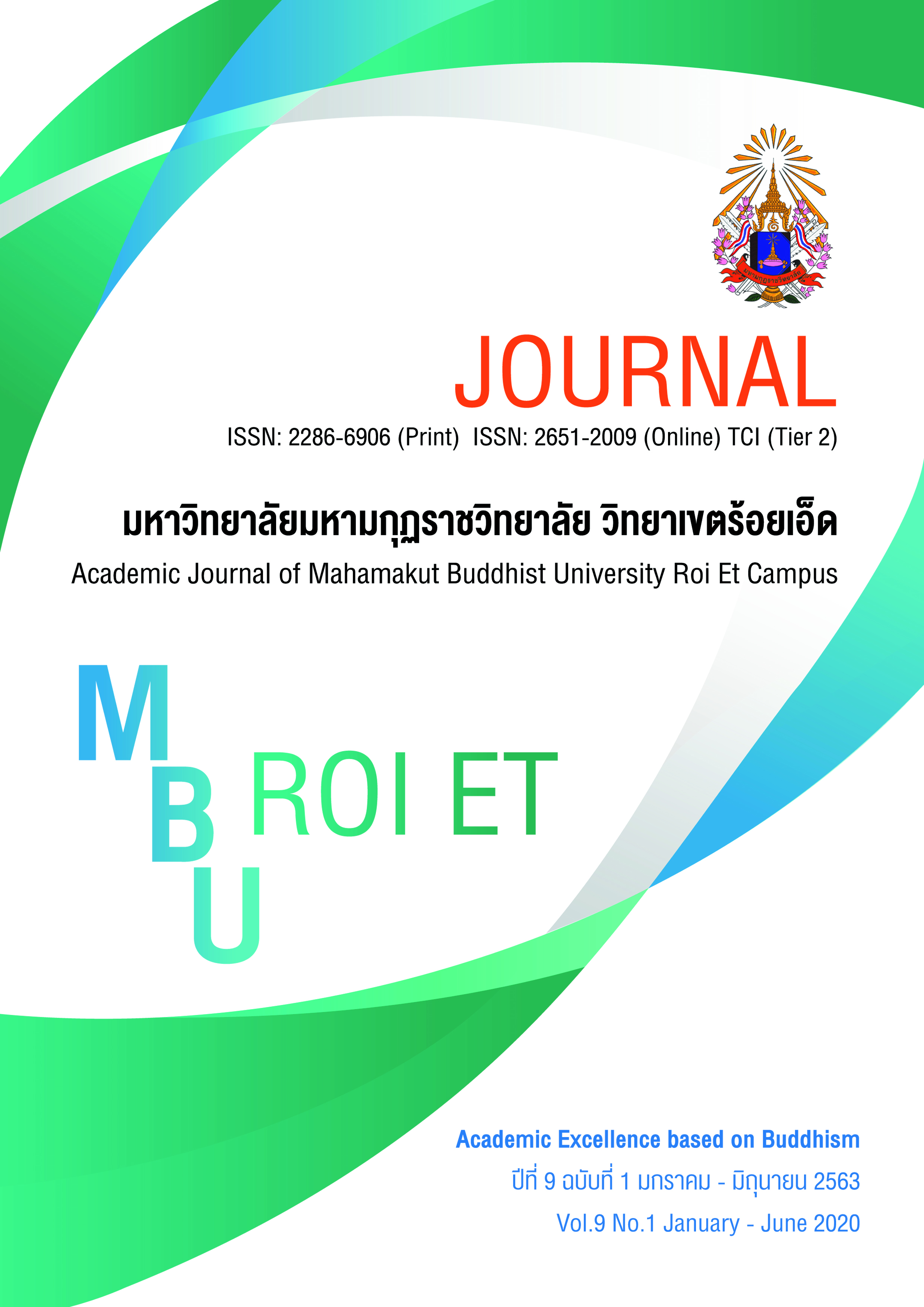Causal Factors Model Influencing the Royalty of the East Lanna Cultural Tourism
Main Article Content
Abstract
The purpose of this research was to study the linear structural relationship model of causal factors influencing the loyalty of the East Lanna cultural tourism. To examine the consistency of the linear structural relationship model of causal factors Which has influence on the loyalty of East Lanna cultural tourism is consistent withempirical data And to study direct influence Indirect influence And the total influence of causal factors that influence the loyalty of Lanna cultural tourism The sample group consisted of 600 people from tourists visiting Chiang Rai, Phayao, Phrae and Nan provinces.
The research instruments were questionnaires. Data analysis by frequency, percentage, mean, standard deviation Pearson's correlation coefficient analysis Confirmatory component analysis at the statistical significance level of 0.05 Linear structural relationship model of causal factors influencing loyalty of East Lanna cultural tourism developed in harmony with empirical data With the chi-square value equal to 362.35 at 59 degrees of freedom, significance level (P-Value), 0.00 The average square of the estimation error (RMSEA) is 0.08. The root index of the standard quadratic mean of the remaining (SRMR) is 0.03.
Article Details
References
ชื่นนภา นิลสนธิ และคณะ. (2559). การท่องเที่ยวเชิงสุขภาวะด้านการพัฒนาการฟื้นฟูจิตวิญญาณ: ปัจจัยแรงจูงใจที่มีอิทธิพลต่อความพึงพอใจและการตั้งใจกลับมาท่องเที่ยวซ้ำ กรณีศึกษา จังหวัดเชียงใหม่. วิทยานิพนธ์ปริญญาศิลปศาสตรมหาบัณฑิต สาขาวิชาการจัดการการท่องเที่ยวแบบบูรณาการ. บัณฑิตวิทยาลัย : สถาบันบัณฑิตพัฒนบริหารศาสตร์.
นิภาพร ปาวพรม. (2556). ความสัมพันธ์ระหว่างปัจจัยทางการตลาดกับความจงรักภักดีของลูกค้าแหล่งท่องเที่ยวทางวัฒนธรรม บ้านด่านเกวียน อำเภอโชคชัย จังหวัดนครราชสีมา.วิทยานิพนธ์ปริญญาศิลปศาสตรมหาบัณฑิต สาขาวิชาการจัดการท่องเที่ยวและการโรงแรม. มหาวิทยาลัยมหาสารคาม.
นุชนารถ รัตนสุวงศ์ชัย. (2554). กลยุทธ์การพัฒนาการท่องเที่ยวเชิงวัฒนธรรม. วารสารมนุษยศาสตร์ คณะมนุษยศาสตร์ มหาวิทยาลัยเกษตรศาสตร์. 18(1). 31-50.
มิ่งสรรพ์ ขาวสะอาด และคณะ. (2553). การพัฒนาอุตสาหกรรมท่องเที่ยวเชิงบูรณาการที่ยั่งยืนในภูมิภาคลุ่มแม่น้ำโขง 4. เชียงใหม่ : สถาบันวิจัยสังคม มหาวิทยาลัยเชียงใหม่.
ศิริชัย พงษ์วิชัย. (2556). การวิเคราะห์ข้อมูลทางสถิติด้วยคอมพิวเตอร์. พิมพ์ครั้งที่ 24. กรุงเทพมหานคร : สำนักพิมพ์แห่งจุฬาลงกรณ์มหาวิทยาลัย.
อาชว์บารมี มณีตระกูลทอง และคณะ. (2559). การพัฒนาศักยภาพทางการแข่งขันของการท่องเที่ยวชุมชนในจังหวัดเชียงใหม่และลำพูนในการรองรับการเข้าสู่ประชาคมอาเซียน.เชียงใหม่ : สถาบันวิจัยสังคม มหาวิทยาลัยเชียงใหม่.
Becker, B. E., Huselid, M. A., Becker, B. E., &Huselid, M. A. (1998). High performance work systems and firm performance: A synthesis of research and managerial implications. In Research in personnel and human resource management. Greenwich, CT : JAI Press.
Hair, J. F., Anderson, R. E., Tatham, R. L., & William, C. Black (1998). Multivariate data analysis: Upper Saddle River. New Jersey : Prentice Hall.
Al Mamun, A., & Mitra, S. (2012). A methodology for assessing tourism potential: case study Murshidabad District, West Bengal, India. International Journal of Scientific and Research Publications. 2(9). 1-8.
Moswete, N., Saarinen, J., & Monare, M. J. (2015). Perspectives on Cultural Tourism: A Case Study of Bahurutshe Cultural Village for Tourism in Botswana. Nordic Journal of African Studies. 24(3&4). 279-300.
Qu, H., Kim, L. H., & Im, H. H. (2011). A model of destination branding: Integrating the concepts of the branding and destination image. Tourism management. 32(3). 465-476.
Rahman, W. (2012). Cultural tourism and Bangladesh: An overview. Bangladesh Research Publications Journal. 7(1). 6-15.
R.E. Schumacker, R.G. Lomax. (1996). A beginner's guide to structural equation modeling. Lawrence Erlbaum Associates, Mahwah, NJ.
Smith, M. K. (2015). Tourism and cultural change. The Routledge handbook of tourism and sustainability. 175-184.


